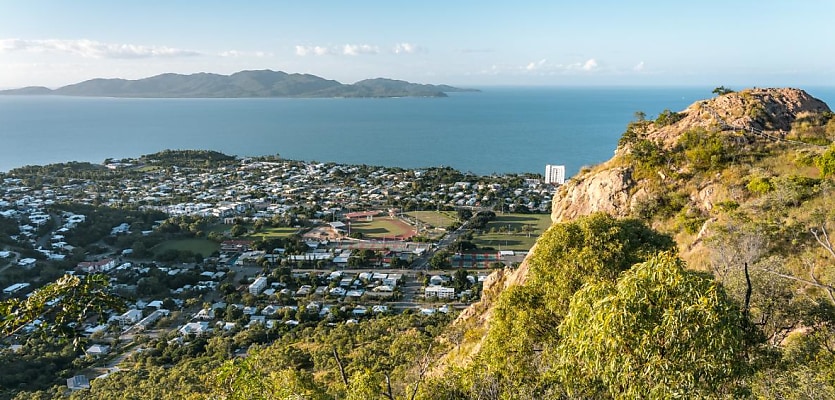A new report has detailed the perilously low rental supply available across Queensland, and the government intervention necessary for the rental market to recover.
The Real Estate Institute of Queensland (REIQ) Residential Vacancy Report for the March 2024 quarter showed rental availability remains low across the state.
Of the 50 local government areas and subregions surveyed in the report, vacancy rates dropped in 22, were stable in 10 and climbed in 18 when compared to the previous quarter.
The REIQ noted these fluctuations were limited to a mere 0.2 per cent up or down change that did not present any meaningful change to the status quo.
The sole area with a vacancy rate classified by the REIQ as “healthy” (between 2.6 per cent and 3.5 per cent) was found to be Mount Isa with its 3.4 per cent vacancy rate.
With the state’s overall vacancy rate sitting at 0.9 per cent, more than half of the areas reported on are hovering at 1 per cent or below.
Notably, rock bottom vacancy rates remained in Goondiwindi (0 per cent), Charters Towers (0.1 per cent), and Cook (0.1 per cent).
REIQ CEO Antonia Mercorella stated that while the data suggests that vacancy rates are relatively stable, the rental market is not in a healthy state and “it would be a long road to recovery”.
“Another quarter and it’s sadly the same old story of seriously scant rental availability right across Queensland,” Mercorella stated.
“This is not a pattern that any of us want to be seeing, report after report, but it is the reality for so many renters looking for rental housing in our state.”
Within this highly competitive market, Mercorella stated that “most renters are aware that they will need to start looking [as] promptly as possible to grant themselves enough time to secure their next rental”.
Recognising the difficulty of balancing the completion of applications and viewing of rental properties with work and other commitments, the CEO did concede that these are still the “necessary steps for the best chance of success”.
Even so, Mercorella noted that “some rental applicants aren’t ever making it to the top of the pile” due to the overwhelming volume of applications being received by property managers.
The CEO was adamant that curbing the rental crisis requires government support in the form of social housing and rental assistance that will seek to “keep the most vulnerable people in our communities housed”.
“At the same time, the longer-term solutions including a concerted effort towards improving productivity and affordability of the construction of new dwellings are essential to fixing this supply issue.”
Turning her attention to build-to-rent initiatives, Mercorella described them as an important piece of the puzzle in boosting supply but dismissed their status as a “silver bullet”.
The “rental market will still heavily rely on everyday citizen investors choosing to rent out their properties”.
“Our view is the incentives given to institutional investors should be extended to private investors, acknowledging the crucial role they play in housing Queenslanders and encouraging them to continue to do so,” she concluded.
Residential vacancy rates in Queensland:
Across the first three months of 2024, there were virtually no rental properties to be found in Goondiwindi (0 per cent), while options were also scarce across Charters Towers (0.1 per cent), Cook (0.1 per cent), Banana (0.2 per cent), Tablelands (0.3 per cent), Maranoa (0.4 per cent), Southern Downs (0.4 per cent), Maryborough (0.5 per cent), Mareeba (0.6 per cent) and Central Highlands (0.7 per cent).
In the regional centres, Mackay (0.6 per cent) remained one of the tightest rental markets to break into, followed closely by Rockhampton (0.7 per cent), Toowoomba (0.8 per cent) and Bundaberg (0.9 per cent), then Gladstone (1.2 per cent) and Townsville (1 per cent).
The greatest choice in regional rental listings was observed in Mount Isa (3.4 per cent), Issac (1.7 per cent), Lockyer Valley (1.4 per cent), Cassowary Coast and Whitsundays (both 1.3 per cent), and Burdekin and Gympie (both 1.1 per cent).
Scenic Rim and South Burnett both notched up rental vacancy rates of 0.9 per cent.
Greater Brisbane registered as consistent with the state vacancy rate at 0.9 per cent. Brisbane LGA (1.1 per cent), inner city (1.3 per cent) and middle-ring (1 per cent) remained steady, while the outer-ring tightened slightly to 0.8 per cent.
Logan (1 per cent), Caboolture (0.9 per cent), Pine Rivers (0.9 per cent), Redland (0.9 per cent), Ipswich (0.8 per cent), Moreton Bay (0.7 per cent) and Redland’s Mainland (0.6 per cent) all experienced slight dips over the quarter, while Redcliffe lifted slightly to 0.6 per cent.
Bucking the tight rental market trend was Redland’s Bay Islands, with a rental vacancy rate of 5.1 per cent keeping the area well within the “weak” category, which the REIQ described as typical of a remote community.
Noosa rose by 0.5 per cent to 1.9 per cent this quarter, while Queensland’s other tourism markets remained virtually unchanged this quarter, including Gold Coast (1 per cent), Sunshine Coast (0.7 per cent), Maroochy Coast (0.8 per cent), Fraser Coast (0.8 per cent), Hervey Bay (0.8 per cent), Cairns (0.7 per cent), and Caloundra Coast (0.6 per cent).







You are not authorised to post comments.
Comments will undergo moderation before they get published.